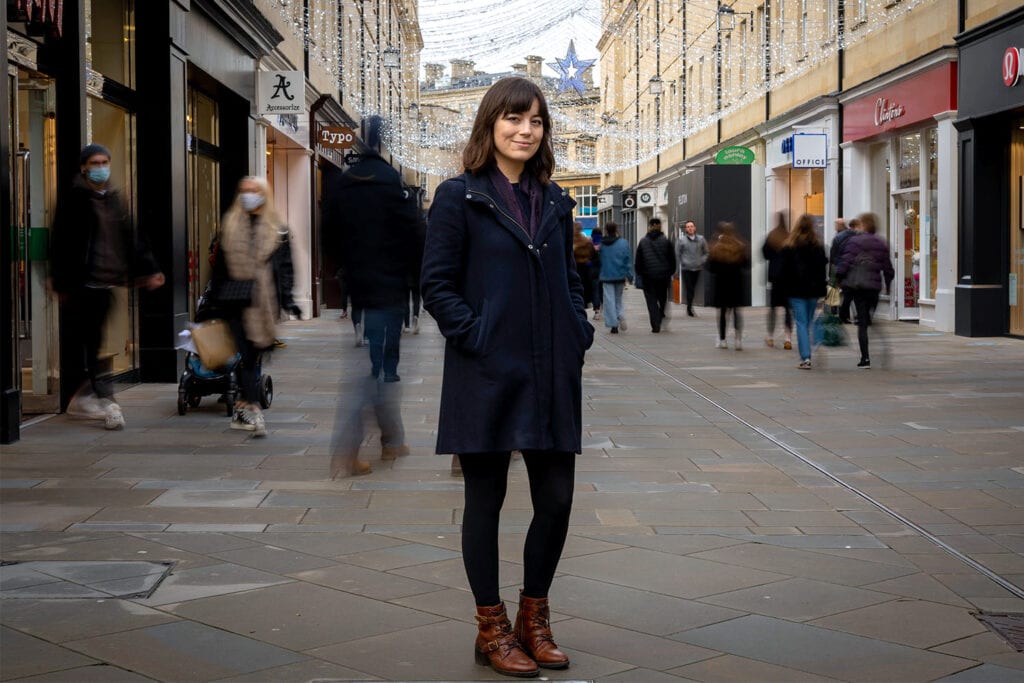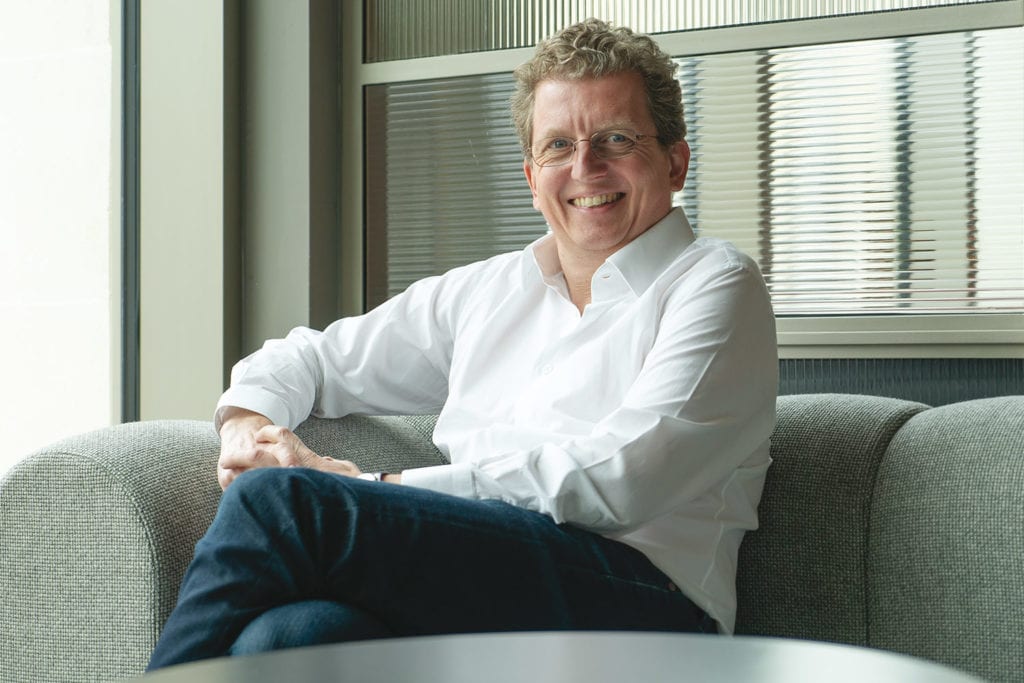
Rachel Monteith and Alison Nicholson spend their days getting people out of holes. Mostly metaphorically, but quite often, it happens for real, especially when it comes to over-enthusiastic archaeologists. We speak to them about the big issues in ground engineering.
Google must be confused. Doing research for this article, I found myself putting in search terms such as “biggest foundation failure” and “most treasure found at building site”, as well the slightly more worrying, “What happens if you dig up a body?”.
So, alongside the usual adverts on my social media feed, I am now being asked to take a refresher course in foundation design, buy a metal detector, and I am sure, very soon, will be getting a call from the police to ask exactly where I buried that body.
Of course, foundations, treasure and buried bodies are all part of week’s work for Buro Happold’s Senior Geoenvironmental Consultant Alison Nicholson and Ground Engineering Director Rachel Monteith. Rachel joined Buro Happold in 2016 after a long stint as a geotechnical engineer at Sir Robert McAlpine. She specialises in construction, tendering, forensic work, as well as all aspects of design, from scheme development to detailed design and validation and control.
Alison also joined Buro Happold in 2016 after working in London, then Vancouver, as a geoenvironmental specialist. Alison is a specialist in land condition (SiLC), a SiLC assessor and has 14 years’ experience assisting clients in the assessment of brownfield sites for acquisition and redevelopment.
We have a good range of expertise at Buro Happold. Larger consultancies may have several teams and the geotechnical engineers will not be talking to the geoenvironmental engineers or engineering geologists, but we all work closely together.
Rachel Monteith, Director at Buro Happold
Building on solid ground
When you stand up, the land under your feet feels stable, doesn’t it? Do not be fooled, said Rachel. “If you look at old churches, they tend to be built on the highest, most solid ground. People knew where the solid ground was, and they are built straight onto the ground. Now we build even bigger things, and we built on marginal land, and build on land that is previously used. We are still using the ground, but it has got a whole lot more complicated.”
Rock, soil, tunnels, mine working, rubbish dumps; the land you want to build on may not be as reliable as you think. It is Rachel and Alison’s job to manage that risk and advise you on the best course of action. Firstly, you need to know what you are dealing with, and the good news is that a thorough desk study and subsequent site investigation will do this. The bad news is, that you may not like what Rachel and Alison find.
Everyone believes the ground is solid. It is not. Anyone of a certain age will remember old town gas sites in the UK. They are all over the country and are being redeveloped. But of course, they have huge legacy issues.
Rachel Monteith, Director at Buro Happold
We have to understand the history, understand what impact we are going to have. We have to know whether there are any tunnels underneath, know whether there is a dirty great big pit full of goodness knows what. We collect as much information as we can before putting anything in the ground. It is a good, sensible starting place.
So what solutions are needed to create safe and suitable developments on brownfield sites? It depends on the contamination, what the land will be used for, the client’s attitude to risk, and how much the client is willing to spend.

Alison explains that her job is to understand the risks, to mitigate those risks and to reduce uncertainty for our clients. Contamination was an issue in an old metal plating factory, where, as Alison put it, “they used to throw degreasing solvents out of the back door because they thought they had evaporated.
Unfortunately, they do not. The vast majority trickle down, through made ground, potentially through natural strata, through groundwater and through bedrock. There, the contamination sits, because it is heavier than water. What it does then, is travel along the topography of the bedrock.
“So it can be difficult (although not impossible) to predict where these chlorinated solvents end up,” explains Alison. “One drop of chlorinated solvent could contaminate thousands of litres of groundwater. Luckily, in some areas like London, there is often a substantial thickness of London Clay underlying the site; this can protect the underlying chalk aquifer that you draw water from to drink.”
Enter, the conceptual site model, or CSM. This vital ground engineering tool allowed Alison to build a picture of the site, examining the physical, chemical and biological processes that control the transport, migration and potential impacts of contamination to human, groundwater and surface water receptors.
“If you encounter a shallow localised area of impacted groundwater that is not being extracted, okay, we can manage that easily. But if say, a pile is driven through the London Clay into the chalk that can create a pathway to an aquifer used for drinking water abstraction, that is a whole other conversation! But that is unlikely to happen if you use the right piling technique.”
Alison and Rachel’s roles are not just about understanding and disseminating the strata and its makeup, it is knowing what will be built. Where will the foundations and underground utilities go? Will they introduce a pathway for the contaminants that will create a problem? Who is going to be impacted?
Understanding the context
“If I have high levels of arsenic in the soil, and I have a big landscaped area with lots of toddlers playing around potentially eating soil, that is a high risk to the future users,” says Alison. “However, if I have the same level of arsenic in the soil and I decide to put a cap, or some hardstanding, or a building over that, then we do not have a pathway between our source of contamination and our receptor and the risk is lower.”
Land may need to be dug out, whether it is contaminated or not, “You might want to put a double height basement in an area of contaminated land, in which case, this is a great opportunity for betterment as we were going to excavate it anyway!”
There are risky sites and there are risk-averse clients. Both Rachel and Alison’s roles involve communicating one to the other. Alison and Rachel look at the two different aspects of the ground. What they are both doing, what all of the ground engineering team is doing, is managing risk. This risk management is needed whether clients already own the land, or whether they are thinking of buying it and need Buro Happold’s expert help.
A lot of our work is managing risk perception of both clients and our communities. Some people are more risk averse than others. It is all to do with how you communicate that risk to another party so they are informed, and they understand what the actual risks are, not just the perceived risks.
Alison Nicholson, Senior Consultant at Buro Happold
Reassuring the residents
In 2017, Buro Happold was appointed to investigate a residential development that had been built on a former gasworks. The investigation for the 1980s redevelopment was limited and there was little reliable evidence of remediation or current land condition. Under their responsibilities under the Environmental Protection Act, Elmbridge council identified the site as a priority for investigation.

Of particular concern was the potential for benzene (a carcinogen) to enter people’s homes as a vapour derived from the gasworks tars potentially still present in the below ground soils and groundwater. If the investigation proved there was contamination, it could result in residents being responsible and financially liable in law for any necessary remedial action in their homes or gardens.
Buro Happold’s investigation was designed to interrogate contaminant linkages and uncertainties. It required not only the rigorous application of best practice, but also sensitive communication with all of the residents, as we were sampling in their gardens and drilling on their roads and pavements.
Complex and detailed modelling and risk assessments demonstrated that most contaminants presented a low risk. Although some limited risks were greater than low, they did not exceed the legal test limits of the Environmental Protection Act and there was no “significant possibility of significant harm”. Buro Happold’s report explained that no remedial action was required for the residents to continue the safe enjoyment of their homes and neighbourhood.
“Risk communication was very important,” said Alison. “We were successful as we informed the residents what was going to happen and when, did exactly what we said we were going to do, and then we confirmed what we had done.”
Bring up the bodies… and gold
It is satisfying when a client comes away reassured, but sometimes, there are unwelcome surprises. When completing a desk study at an old incandescent mantel works, Alison discovered that thorium, which is radioactive, was likely to be present in the ground. On advising the client of the potential risks, liabilities and likely mitigation measures needed to ensure a safe and suitable development, the client decided not to purchase the property.
Sometimes the surprises are merely interesting, rather than unwelcome or costly. Both Rachel and Alison have seen a lot of items dug up from sites over the years. When bodies are found which have to be moved, they are normally carefully reinterred.
Rachel had responsibility for the geotechnical work on a site which included a deep basement. The archaeologists had to clear the site of burials known to be present before work started. The find of a decorated lead coffin in Roman sarcophagus, and a woman in it, was entirely unexpected. “It was just fabulous – a superb piece of archaeology,” said Rachel. The coffin now resides in the Museum of London.
Some bodies are dug up and taken away, but as Rachel explains, what happens to human remains has changed in recent years. “Archaeologists prefer to leave everything in situ if all possible. Zero disturbance is the aim. However, all artifacts which are actually excavated, will be removed, and this includes skeletons.”
Very occasionally, something might be found that changes a project, and a client’s finances, in a big way. A site investigation company working at a London City Livery Hall found a stash of gold coins whilst working in the basement. The value of the haul was enough to pay for the entire development.
Rachel Monteith, Director at Buro Happold
When it comes to finding priceless gold coins, Buro Happold’s ground engineers are still waiting for their turn. It seems that their roles, from reassuring clients to assessing contamination, discovering hidden tunnels to navigating mine workings, are far more interesting than merely hunting for treasure.













